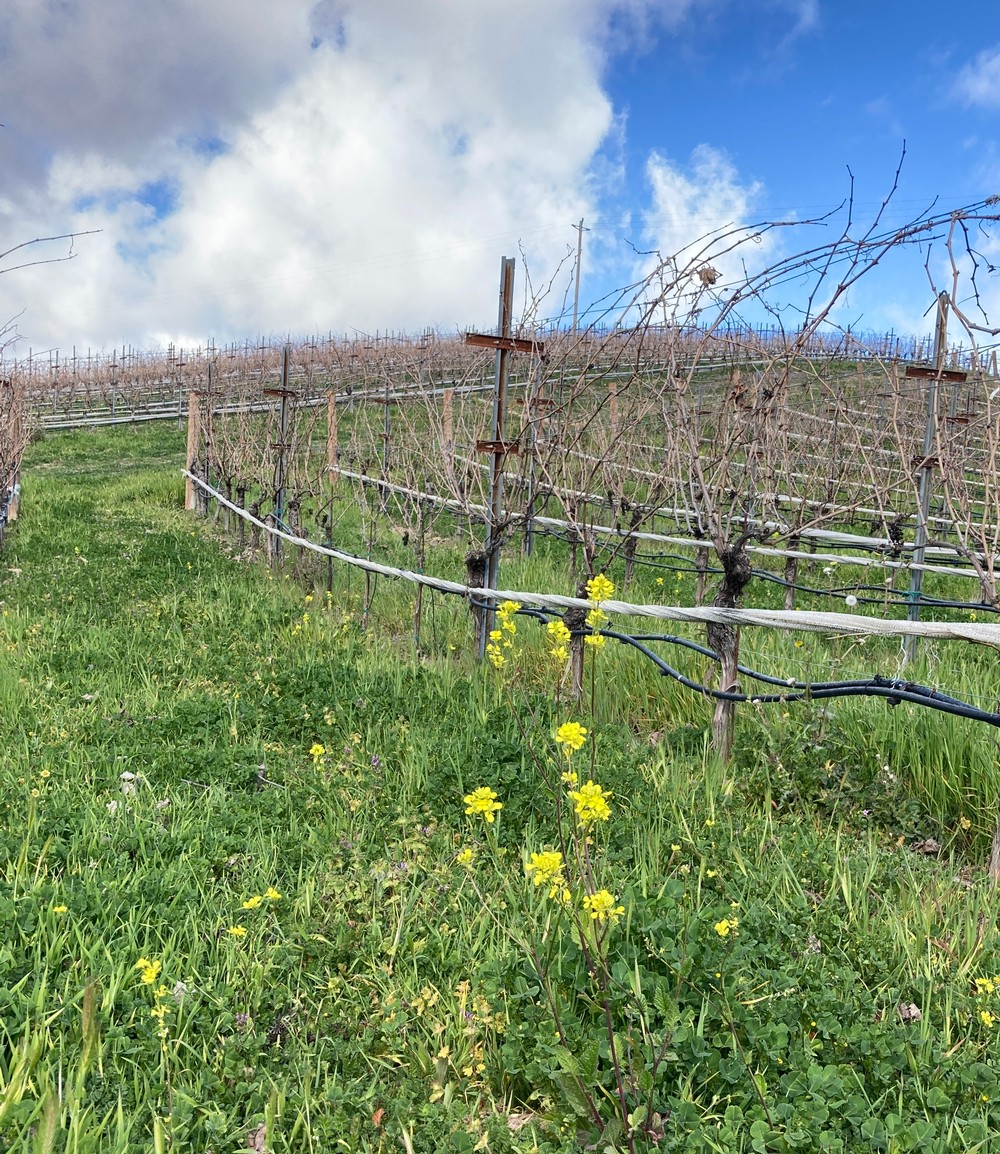Winter in the Vineyard
Bare vines and dark soil spotted with green grass speckle the hillsides as puffy clouds pass overhead in the vineyard. The quiet landscape of the season, while simple, is beautiful. Despite the tranquility, there is still work to be done and activity begins weeks before the end of Winter.
The first task is composting. Tractors spread it between the rows of the bare vines, which awakes the vineyard to the season ahead. It takes 2 years for the compost to be used by the soil. That's correct, two years. I thought it would have been immediate, but microorganisms in the soil have to break it down. Once it breaks down it gives the soil carbon, nitrogen, and minerals that feed the vine's root system. We have to do this as the vine loses these elements every harvest. We use organic compost instead of chemical compost as it is sustainable. Organic compost also doesn't encourage overgrowth in the vineyard. As my dad shared, chemical compost can act like steroids for a vineyard. We want growth, but not that kind of growth.
The next task is pruning. The vineyard gets a haircut with the old wood being pruned. The pruner keeps two canes (old shoots) on the vine for this year's growth. It is a job that requires time and diligence. We prune later in the Winter to protect the vine from disease. Timing is everything in farming.
Once trimmed, the vine awaits bud break. It is my favorite time of year as the bare vines show life again (even though I know the vines are alive during the Winter...haha). Till then, bring a blanket or coat, and enjoy the tranquility at the tasting room.
Cheers!
-Cecily


